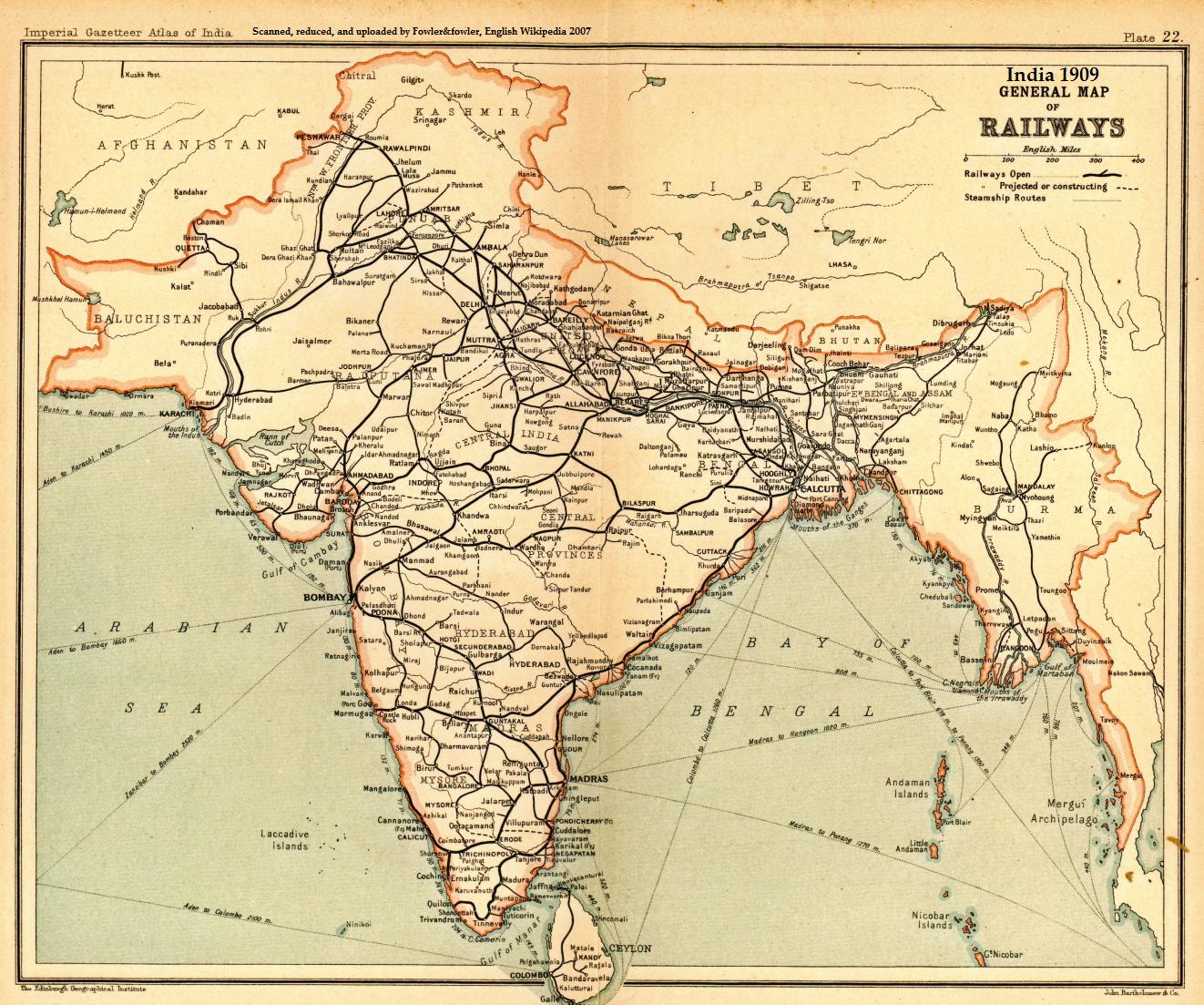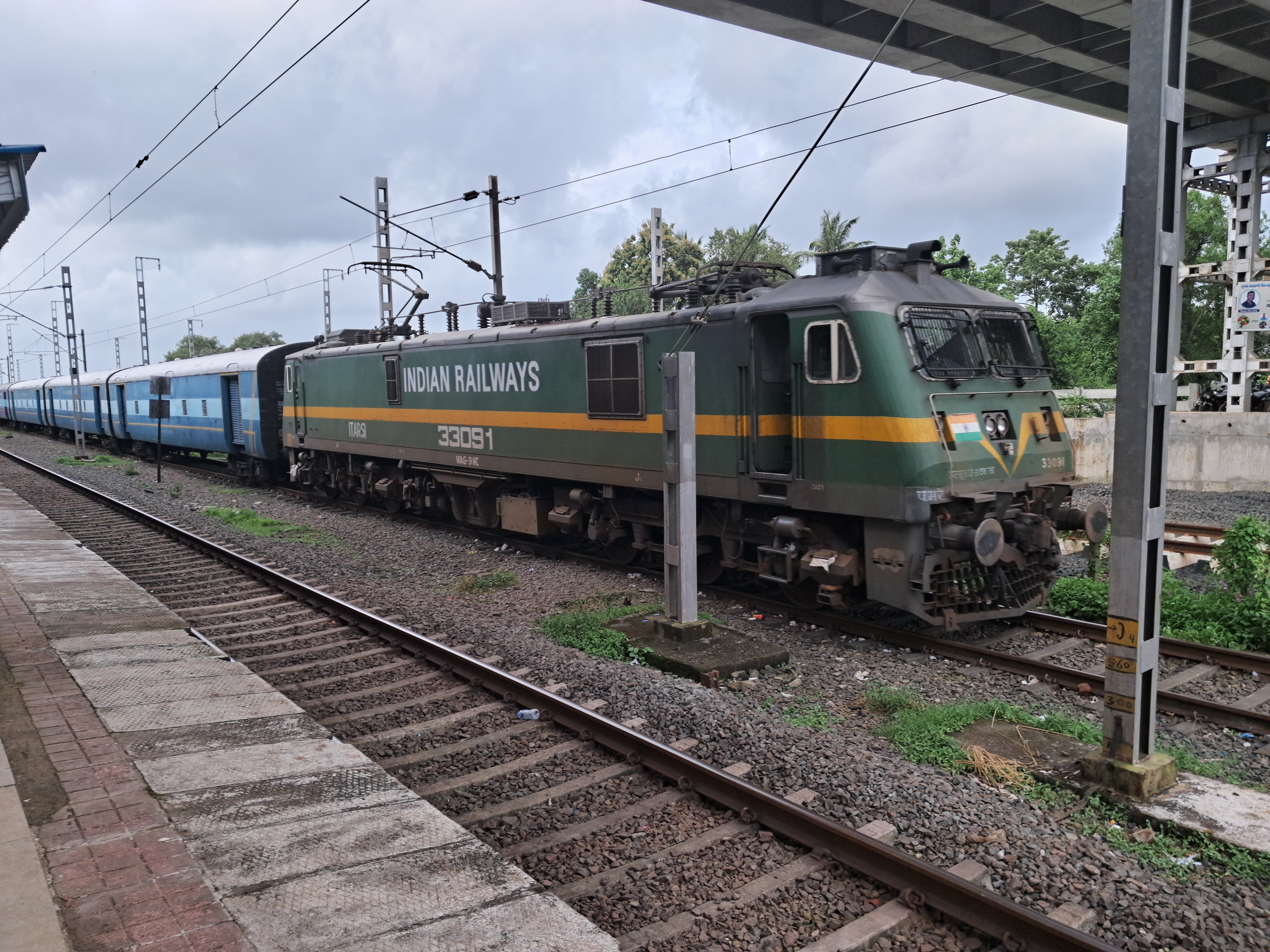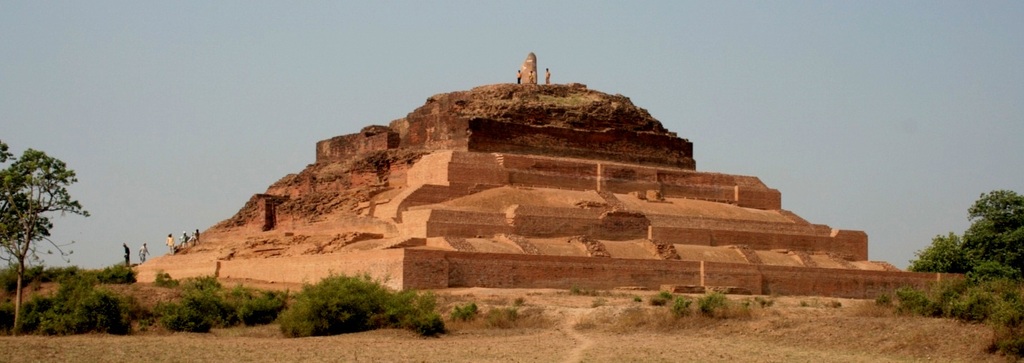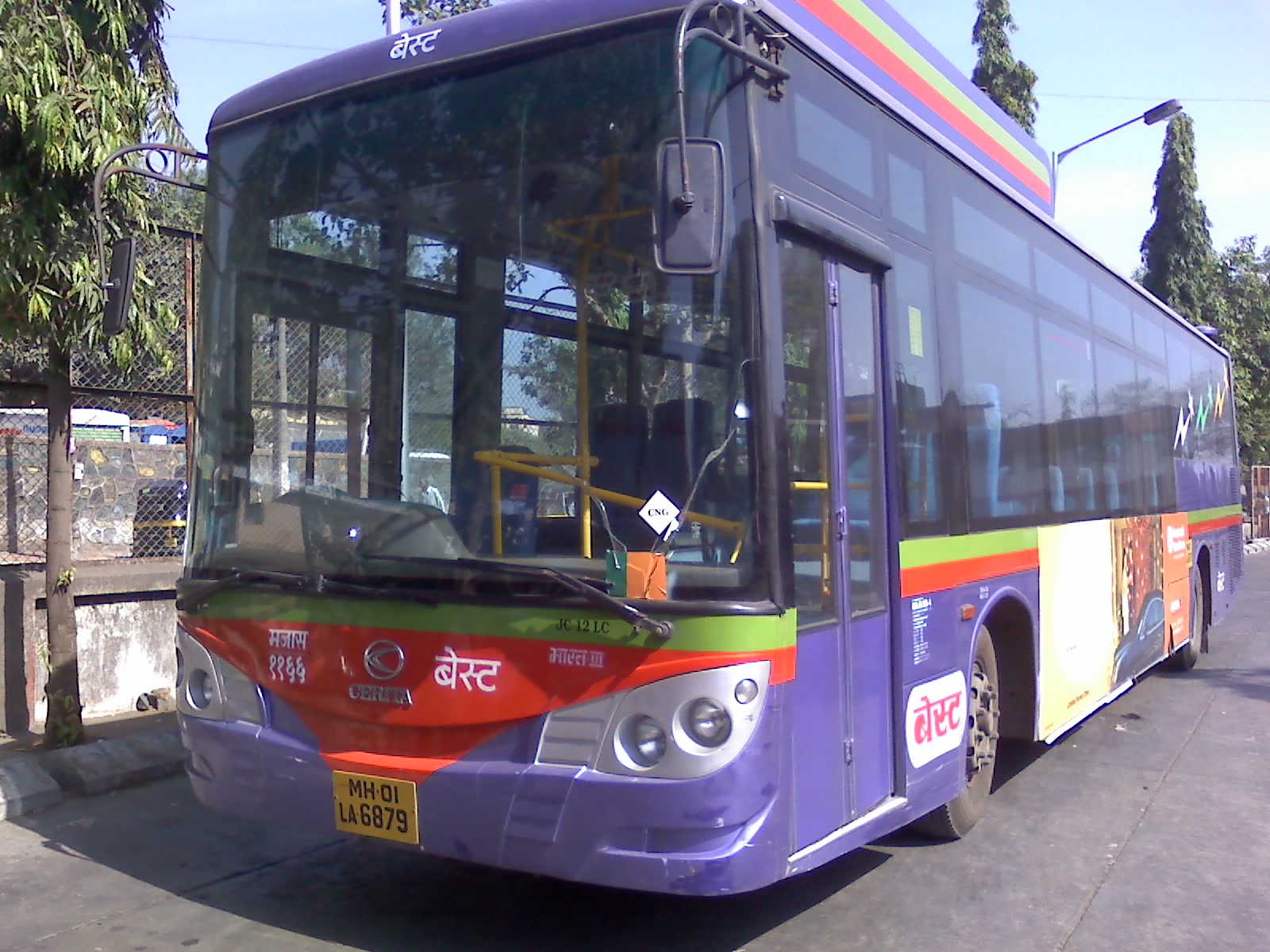|
Lokmanya Tilak Terminus–Bareilly Weekly Express
The Lokmanya Tilak Terminus–Bareilly Weekly Express is an Express train belonging to Northern Railway zone that runs between Lokmanya Tilak Terminus and in India. It is currently being operated with 14313/14314 train numbers on a weekly basis. It is the first train to run between Mumbai and Bareilly. Inaugural run of this train was on 15 January 1996 between Dadar Railway station to Bareilly Junction .later originating station changed to Lokmanya Tilak Terminus ( Kurla ) Service The 14313/Mumbai LTT–Bareilly Weekly Express has an average speed of 51 km/h and covers 1604 km in 31h 35m. The 14314/Bareilly–Mumbai LTT Weekly Express Express has an average speed of 57 km/h and covers 1604 km in 28h 45m. Route and halts The important halts of the train are: * Lokmanya Tilak Terminus * * * * * * * * * * * * * * * * * * * * * * * * * Coach composition The train has standard ICF rakes with a maximum speed of 110 km/h. The train ... [...More Info...] [...Related Items...] OR: [Wikipedia] [Google] [Baidu] |
Express Trains In India
India has a system of express trains, operated by Indian Railways which comes under the purview of the Ministry of Railways (India), Ministry of Railways of Government of India. , it maintains over of tracks, spanning across in route length, and operates nearly 3,000 express trains daily. According to the Ministry of Railways, express trains travel faster and have limited stops than Slow and fast passenger trains in India, ordinary passenger trains. Any passenger train with an average speed higher than is considered super-fast. , India does not have any operational High-speed railway, high-speed trains. The maximum operational speed of is achieved by Gatimaan Express and Rani Kamalapati (Habibganj)–Hazrat Nizamuddin Vande Bharat Express on the Tughlakabad railway station, TughlakabadAgra Cantonment railway station, Agra section. Earlier steam locomotive operated trains largely operated below . With the introduction of electric locomotives in later 1920s and newer steam ... [...More Info...] [...Related Items...] OR: [Wikipedia] [Google] [Baidu] |
Northern Railway Zone
The Northern Railway (NR) is one of the 17 Railway zones of India and the northernmost zone of the Indian Railways. It is headquartered at Baroda House in New Delhi. History Officially notified as a new railway zone on 14 April 1952, its origin goes back to 3 March 1859. On 14 April 1952, the Northern Railway zone was created by merging Jodhpur Railway, Bikaner Railway, Eastern Punjab Railway and three divisions of the East Indian Railway north-west of Mughalsarai (Uttar Pradesh). On 3 March 1859, Allahabad–Kanpur, the first passenger railway line in North India was opened, which falls under Northern Railway zone. In 1864, a broad-gauge track from Calcutta to Delhi was laid. In 1864, the railway line between Old Delhi and Meerut City railway station was constructed. Meerut Cantt railway station was established by British India government around 1865 after the sepoy mutiny of 1857. In 1866, through trains started running on the East Indian Railway Company's ... [...More Info...] [...Related Items...] OR: [Wikipedia] [Google] [Baidu] |
Lokmanya Tilak Terminus
Lokmanya Tilak Terminus (also known by its former name Kurla Terminus, station code: LTT) is a railhead and a major railway terminus in the Kurla suburb of Mumbai, India. LTT is managed by the Central Railway. The and suburban railway stations are located nearby. It is one of the five railway terminals within Mumbai, the others being Chhatrapati Shivaji Terminus, Dadar (Central) on the Central line, and , Dadar (Western) and Bandra Terminus on the Western line. History In 1996, the Brihanmumbai Municipal Corporation (BMC) approved a plan to rename the Kurla Terminus station after Lokmanya Tilak, a popular leader of the Indian independence movement, and forwarded it to the Union Government through the Government of Maharashtra. Then Union Home Minister Lal Krishna Advani approved the proposal in 1999, at the request of Ram Naik, the then Minister of State of Railway. After the decision was announced, Gurudas Kamat, the Lok Sabha member from Mumbai North-East, met L. K. ... [...More Info...] [...Related Items...] OR: [Wikipedia] [Google] [Baidu] |
ICF Coach
The Integral Coach Factory (ICF) coach is a conventional Passenger railroad car, passenger coach used on the majority of Indian Railways (IR) lines. Between 1955 and 2018, more than 54,000 were produced and some were exported to other countries. History The design of the coach was developed by Integral Coach Factory, Perambur, Chennai, India in collaboration with the Schweizerische Wagons- und Aufzügefabrik AG Schlieren-Zürich, Swiss Car & Elevator Manufacturing Co, Schlieren, Switzerland. The bogies were also known as ''Schlieren bogies'' after the location of the Swiss company. An Indian delegation made initial contacts with the Swiss manufacturer at a railway congress in Lucerne in the summer of 1947, the contract for cooperation between the company and the Government of India was signed in Delhi in May 1949, and work on the Perambur factory began a year later. The plant was inaugurated by Prime Minister Jawaharlal Nehru in 1955. By 2018, it had manufactured more than 54,0 ... [...More Info...] [...Related Items...] OR: [Wikipedia] [Google] [Baidu] |
WAG-9
The Indian locomotive class WAG-9 is a class of 25 kV AC electric locomotives that was developed in 1995 by ABB for Indian Railways. The model name stands for broad gauge (W), AC Current (A), Goods traffic (G), 9th generation (9) locomotive. They entered service in 1996. A total of 5140 WAG-9 have been built at Chittaranjan Locomotive Works (CLW), with more units being built at Banaras Locomotive Works (BLW), Bharat Heavy Electricals Limited (BHEL) and Patiala Locomotive Works (PLW). It was the most powerful freight locomotive in the Indian Railways fleet until the introduction of the WAG-12. The WAG-9 class was built to haul freight trains. A passenger variant of the WAG-9 was developed, the WAP-7, with a modified gear ratio to pull lighter loads at higher speeds. EF9K, previously known as WAG-9HH which has a power of 9,000hp has been developed. EF12K, a new evolution of WAG-9 locomotive has been developed with 12,000 hp. Introduction The WAG-9 locomotive is a "He ... [...More Info...] [...Related Items...] OR: [Wikipedia] [Google] [Baidu] |
WAP-4
The Indian locomotive class WAP-4 is a class of 25 kV AC electric locomotives that was developed in 1993 by Chittaranjan Locomotive Works for Indian Railways. The model name stands for broad gauge (W), AC Current (A), Passenger traffic (P) locomotive, 4th generation (4). They entered service in late 1994. A total of 778 WAP-4 were built at CLW between 1993 and 2015, which made them the most numerous class of mainline electric passenger locomotive until the WAP-7. The WAP-4 is one of the most successful locomotives of Indian Railways serving passenger trains for over 29 years. This class provided the basic design for other locomotives like the WAP-6. Despite the introduction of more modern types of locomotives like WAP-7, a significant number are still in use, both in mainline duties. Production of this class was halted in December 2015 with locomotive number 25051 being the last unit to be rolled out. As of March 2025, all locomotives except those lost in accidents still re ... [...More Info...] [...Related Items...] OR: [Wikipedia] [Google] [Baidu] |
Bareilly
Bareilly () is a city in Bareilly district in the Indian state of Uttar Pradesh. It is among the largest metropolises in Western Uttar Pradesh and is the centre of the Bareilly division as well as the historical region of Rohilkhand. The city lies in the Indo-Gangetic Plains, about northwest of the state capital, Lucknow, and east of the national capital, New Delhi. With a population of 903,668 in 2011, it is the List of cities in Uttar Pradesh by population, eighth most populous city in the state, list of North Indian cities by population, 17th in northern India and List of most populous cities in India, 54th in India. It is located on the bank of Ramganga River and is the site of the Ramganga Barrage built for canal irrigation. The earliest settlement in what is now Bareilly was established in 1537 by a local chieftain Jagat Singh Katehriya who named it 'Bans-Bareli' after his two sons Bansaldev and Bareldev. The town came under the rule of the Mughal Empire, Mughals in 15 ... [...More Info...] [...Related Items...] OR: [Wikipedia] [Google] [Baidu] |
Kasara
Kasara is a census town in the Thane district of Maharashtra, India. The town is located on the busy Mumbai– Nashik route, which is one of the four major routes that lead into Mumbai. Kasara is served by a railway station on the Mumbai Suburban Railway, and is the final stop in the north-east sector of the Central Line and important railway station. That is for abbreviation for Kasara Local is set as "N" means North side Local's Last Station. Town is also known for the winding Thal Ghat or better known as Kasara Ghats. One of India's longest road tunnels is located in Kasara. It connects Igatpuri and Kasara under the Nagpur Mumbai Super Communication Expressway (NMSCE), also known as Samruddhi Mahamarg. The tunnel is 7.7 km long which makes it the longest road tunnel in Maharashtra. Demographics India census A census (from Latin ''censere'', 'to assess') is the procedure of systematically acquiring, recording, and calculating population information about the mem ... [...More Info...] [...Related Items...] OR: [Wikipedia] [Google] [Baidu] |
Igatpuri
Igatpuri ( ɡət̪puɾiː formerly known as Egutpoora) is a town and a Hill Station. It is also a municipal council in Nashik District in the Indian state of Maharashtra. It is located in the Western Ghats and served by Igatpuri railway station. Geography It has an average elevation of 600 metres. Average annual rainfall in Igatpuri is 3498mm. Religion Sacred Heart Church Established in 1881, Sacred Heart Church serves the Catholic community in Igatpuri. The church is under the pastoral care of the Dominican Order of Preachers and is part of the Catholic Diocese of Nashik. The parish is led by Fr. Xavier Kandulna, O.P., who serves as the Parish Priest and Superior. The church also manages the Satyagiri Dominican Retreat Centre, offering spiritual retreats and religious programs. Education Holy Family Convent High School Founded in 1888, Holy Family Convent High School is a co-educational institution affiliated with the Maharashtra State Board of Secondary Education. The ... [...More Info...] [...Related Items...] OR: [Wikipedia] [Google] [Baidu] |
Indore–Bareilly Weekly Express
The 14319 / 14320 Indore–Bareilly Weekly Express is an express train service which runs between Indore, the largest city and commercial capital of central Indian state of Madhya Pradesh and Bareilly, the important city of the Uttar Pradesh. Coach composition The train consists of 23 coaches: * 1 AC II Tier * 5 AC III Tier * 12 Sleeper class * 3 General Unreserved * 2 Seating cum Luggage Rake Service *14319/ Indore–Bareilly Weekly Express has an average speed of 45 km/h and covers 1038 km in 23 hrs 10 mins. *14320/ Bareilly–Indore Weekly Express has an average speed of 43 km/h and covers 1038 km in 23 hrs 55 mins. Route and halts The important halts of the train are: * * * * * * * * * * * * * * * * Schedule Direction reversal Train reverses its direction 1 time at: * Traction Both trains are hauled by an Itarsi Loco Shed-based WAP-7 electric locomotive from Indore to Bareilly and vice versa. See also * * Bareilly Ju ... [...More Info...] [...Related Items...] OR: [Wikipedia] [Google] [Baidu] |
Kanpur Central–Amritsar Weekly Express
The Kanpur Central–Amritsar Weekly Express is an Express train belonging to North Central Railway zone that runs between and in India. It is currently being operated with 22445/22446 train numbers on weekly basis. Service The 22445/Kanpur–Amritsar Weekly Express has an average speed of 55 km/h and covers 898 km in 16h 15m. The 22446/Amritsar–Kanpur Weekly Express has an average speed of 55 km/h and covers 898 km in 16h 15m. Route and halts The important halts of the train are: * * * Balamau Jn. (Technical Hault -For Engine Reversal) * * * * * * * * * * * * Coach composition The train has standard ICF rakes (LHB rake since December 2018) with a maximum speed of 110 km/h. The train consists of 16 coaches: * 1 AC II Tier * 3 AC III Tier * 5 Sleeper coaches * 5 General * 2 Seating cum Luggage Rake Traction Both trains are hauled by a Lucknow Loco Shed-based WDM-3A diesel locomotive from Kanpur to Amritsar and vice versa. Direc ... [...More Info...] [...Related Items...] OR: [Wikipedia] [Google] [Baidu] |
Transport In Mumbai
Transport in Mumbai is achieved by both public and private transport. As of 2016, 52% of commuters use public transport. Mumbai has the largest organized bus transport network among major Indian cities. Mumbai's public transport consists primarily of rapid transit on exclusive suburban railway lines augmented by commuter rail on main lines serving outlying suburbs, the bus services of the three municipalities making up the metropolitan area, public taxis and auto rickshaws, as well as ferry services. A metro and a monorail system were inaugurated in 2014. A commercial seaplane service was also introduced in 2014. Road Sea-links As of 2024, Mumbai currently has 3 major operational or under construction sea-links: The Bandra–Worli Sea Link bridge is one of the longest bridges in the country, opened in 2009. It connects the suburbs of Bandra and Worli, and carries around 32,000 vehicles daily as of 2018. The Trans Harbour Link is the longest bridge in India. It was opened ... [...More Info...] [...Related Items...] OR: [Wikipedia] [Google] [Baidu] |




